Next Nature Museum Is a Spaceship of Techno-Optimism
For the past sixty years, a giant flying saucer has graced a sleepy suburb of Eindhoven: the Evoluon. Once built by Philips as a science museum, it is now a showcase for future scenarios under the name Next Nature Museum. These scenarios are colourfully fleshed out by Next Nature, the organisation that propounds the uninhibited and often contagious techno-optimism of Koert van Mensvoort.
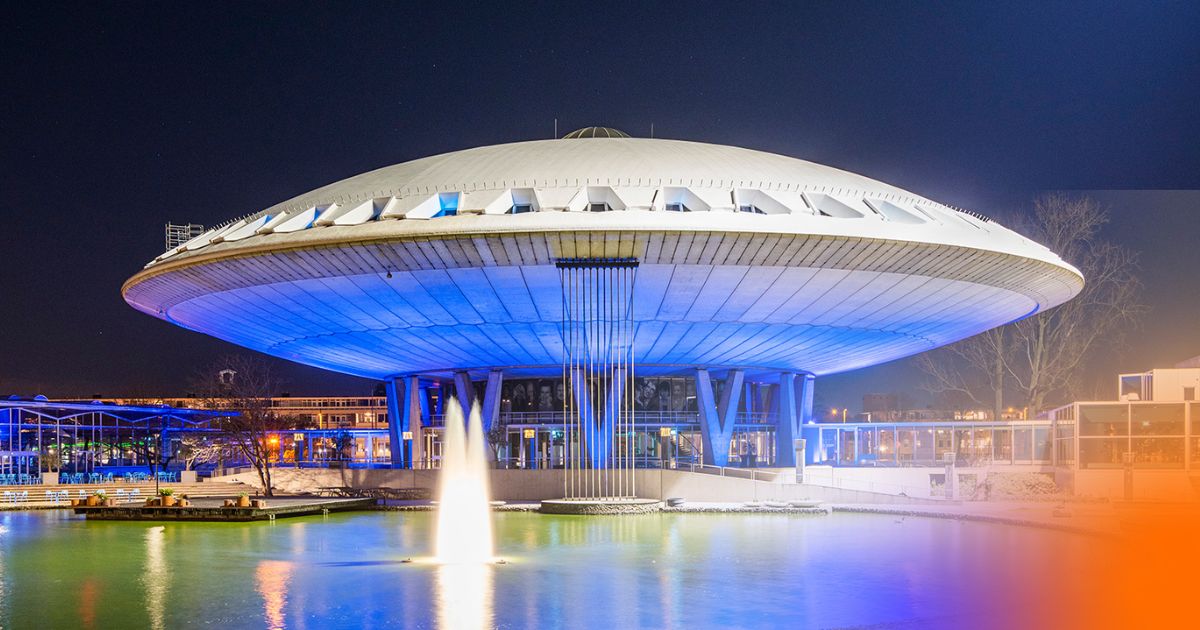 Next Nature Museum
Next Nature Museum© Next Nature Museum
“We are all astronauts on Spaceship Earth,” Wubbo Ockels proclaimed after he became the first Dutchman to make the journey to space. Ockels was not the first to use that image of the earth as a spaceship. As early as 1879, writer Henry Georg spoke of our planet as “a well-supplied ship on which we travel through space.” And in 1969, visionary architect Buckminster Fuller wrote his Operating Manual for Spaceship Earth.
Three years before the Club of Rome sounded the alarm about the dangers of overpopulation, unbridled capitalism and environmental destruction with its publication Limits to Growth, Fuller was already working on the solutions. He took stock of the biggest challenges and formulated a straightforward bottom line: what do we need to do to prevent the extinction of humanity? Among other things, he looked at food production, automation and the problematic aspects of specialization. To arrive at a plea for innovation through revolutionary design.
Innovation through revolutionary design can prevent the extinction of humanity
Next Nature can be seen as Fuller’s direct heir. The organisation of artist, philosopher and scientist Koen van Mensvoort formulates its mission as ‘training the crew of spaceship Earth’. It develops future scenarios in which our approach to ecology, economy and social organisation takes a radically different approach. That sounds very theoretical, but the program is remarkably practical and public-friendly. Next Nature is a cross between a think tank, design lab and communication agency. It allows people to reflect on the future by showing what it could look like, from cultured meat to eco-currencies and from nanotechnology to new forms of manufacturing.
The technosphere builds on the biosphere that is millions of years old
The name Next Nature is telling. Van Mensvoort does not see technology as second nature to humans, but as the primary living environment of the 2.0 version of humanity. In his view, the ‘technosphere’ builds on the biosphere that is millions of years old. At first glance, this is a balanced model, but in thought and action, the emphasis is mainly laid on the man-made component of that living environment. Next Nature does not stand for a return to ‘good old’ nature, but a step forward towards a new, technologically transformed one.
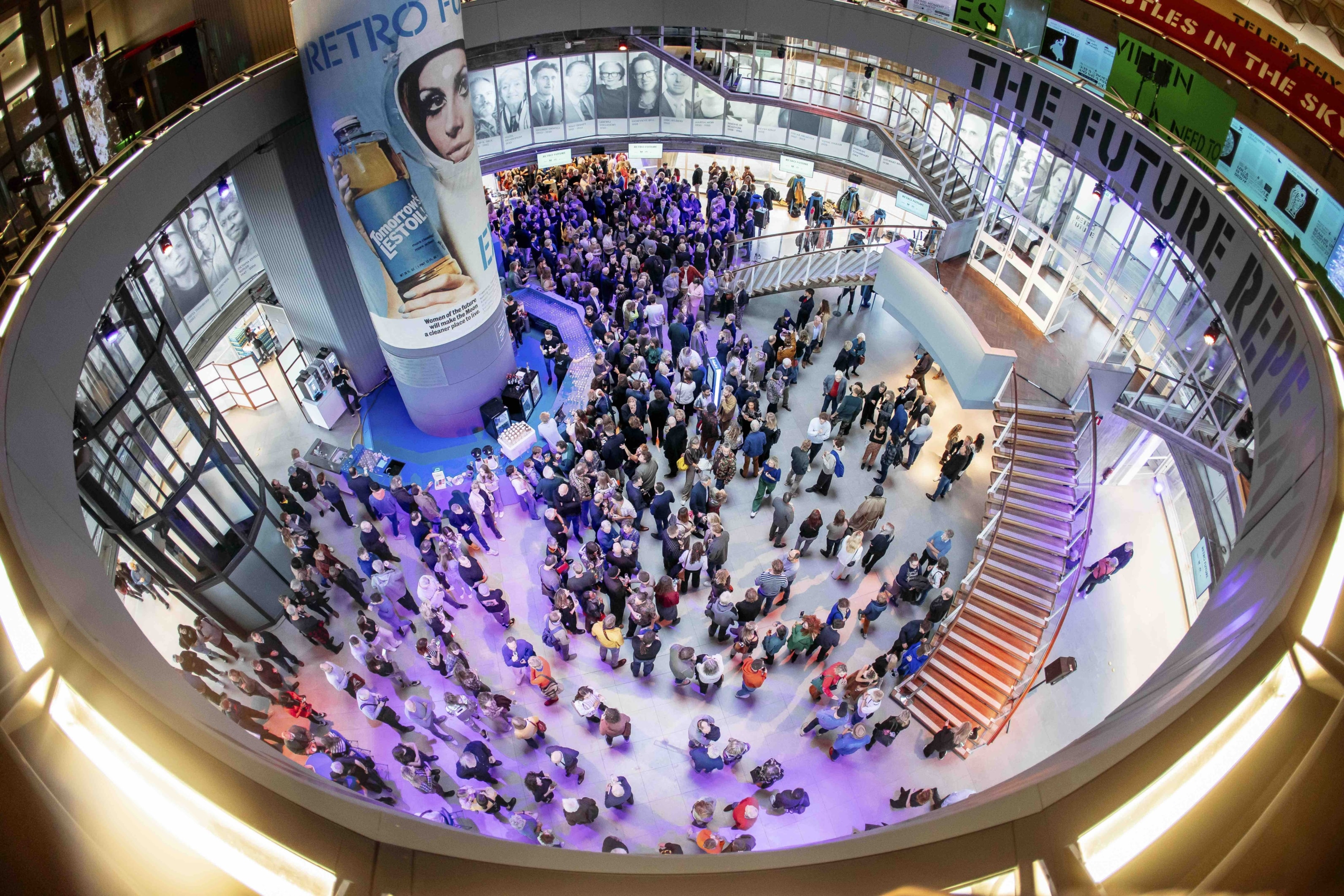
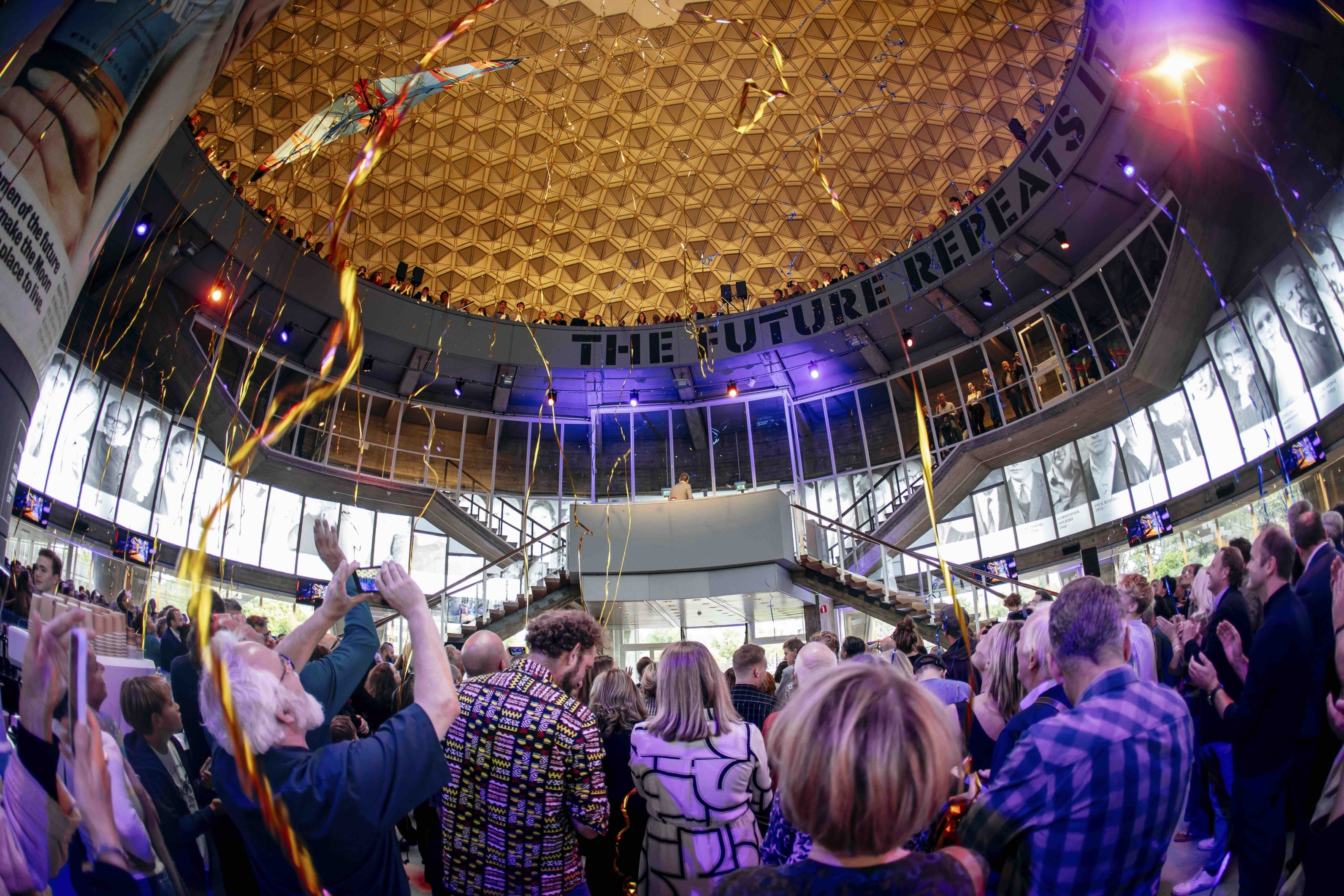
© Next Nature Museum
Next Nature started as a blog in 2005 and developed speculative projects in the field of biotechnology in the years that followed. Looking for a place to set up a larger programme and be more visible, Van Mensvoort returned to the place where he had studied computer science in the 1990s and later obtained his PhD in industrial design. In Eindhoven, he found the ideal place for his training camp for astronauts of the future: the Evoluon.
A flying saucer in Eindhoven
An indelible impression was left on anyone who visited the Evoluon as a child on a school trip or while holding grandma’s hand. That’s how impressive the building is, even six decades after its completion. It looks like aliens have landed a huge flying saucer on a lawn in a sleepy suburb of Eindhoven. Architects Louis Kalff and Leo de Bever were responsible for this architectural masterpiece, which was realized in 1966 to celebrate the 75th anniversary of the Philips concern. The dome, with a diameter of 77 meters, is held together by no less than 169 kilometres of tension cables. While we are wowed on the outside by the futuristic look of the discus-shaped building, inside the jaw drops at the sight of the vaulted ceiling of the firmament.
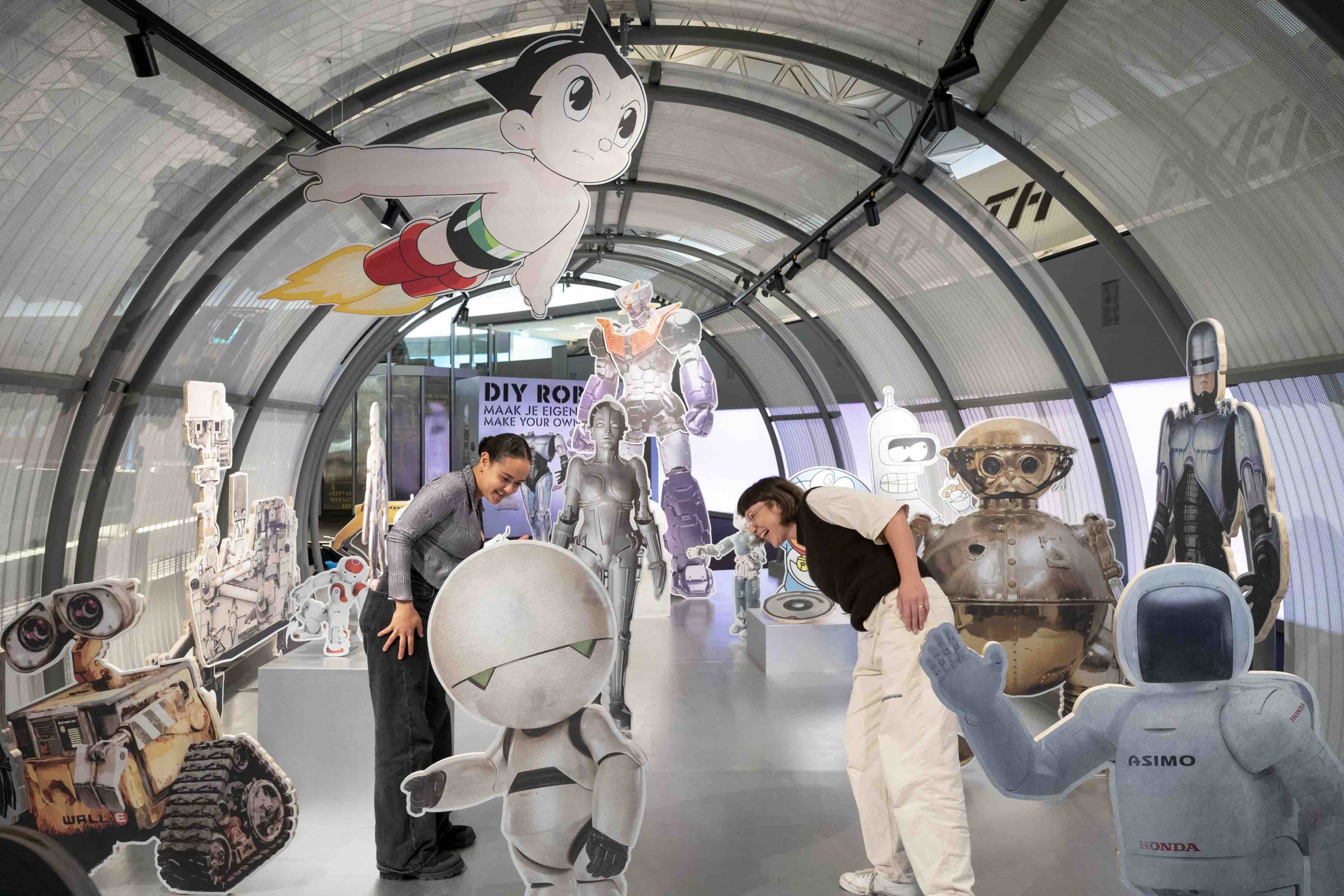
© Next Nature Museum
In the first 23 years of its existence, the Evoluon served as a technology museum, the first of its kind in the Netherlands. Another museum first: visitors were allowed to turn knobs and pull handles to activate experiments and demonstration models. By the end of the 1980s, however, this was no longer so unique and the Evoluon had faced competition from science museums with much more advanced exhibits. The museum was running at a loss and Philips was not doing well either. So, the exhibition space was closed, and the building continued as a conference and event centre.
Playground for Kraftwerk
The Evoluon regained widespread public attention in 2012 when the first temporary exhibition was organized, on this occasion about the human brain. A year later, the German electro-pop band Kraftwerk performed there four times. And several films and TV series were shot there. The building finally became more than just a spectacular backdrop again in 2022, when Next Nature moved in. As of the summer of 2024, only the building itself was called Evoluon and the museum Next Nature Museum.
The new resident of the discus-shaped building demonstrated its historical awareness with its very first exhibition, RetroFuture exhibited the futures of the past, from Leonardo da Vinci’s dream of being able to fly to the idea for video calling that Philips designers came up with long before Skype and Zoom existed. The opening exhibition was preceded by an online VR project that received more attention than it would normally have generated in the middle of the corona period. Users were able to catapult billions of years into the future, the foreland of Next Nature.
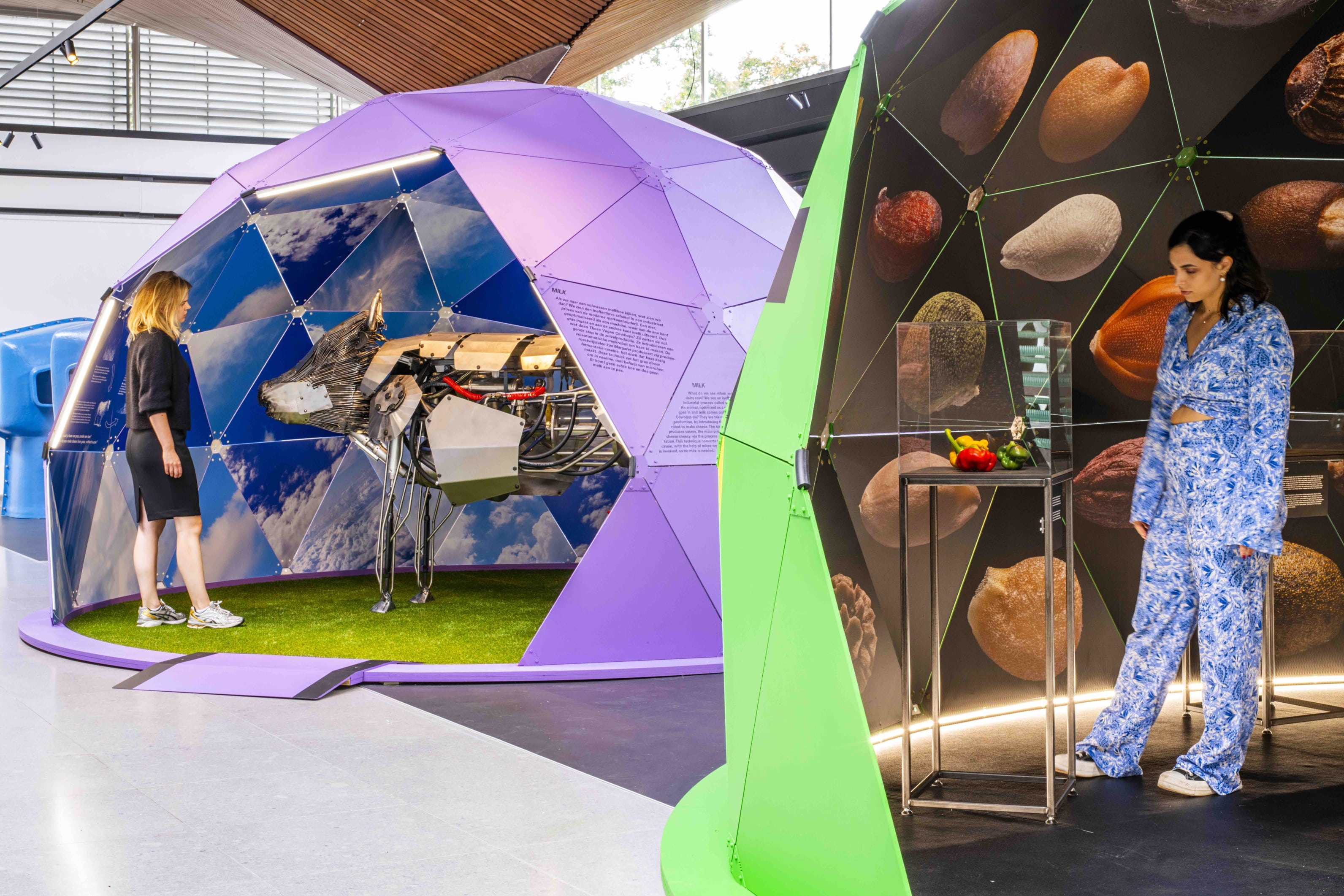
© Next Nature Museum
This giant leap in time is atypical for Next Nature, which usually adheres to a shorter timescale by addressing subjects that are currently topical and that directly appeal to visitors. This certainly applies to the current Space Farming exhibition: after all, we all have to eat, and with farmers’ protest actions on a practically weekly basis, everyone gives food production a thought from time to time. In this presentation, Next Nature shows how we can effortlessly feed a world population of ten billion by 2050. For example, with Margaret, the mechanical cow from Those Vegan Cowboys or the bioreactor from Space 10 that produces algae as a protein-rich meat substitute. In collaboration with a space biologist from Wageningen University, the possibilities of agriculture on Mars or the moon are also investigated.
The Next Nature Museum attracted more than eighty thousand visitors in 2023, not bad for an institution that recently started, but its ambitions reach further. The aim is to put the presentations on the road and to appeal to an international audience. Next Nature also publishes books on such appealing topics as the influence of mobile phones on our daily lives.
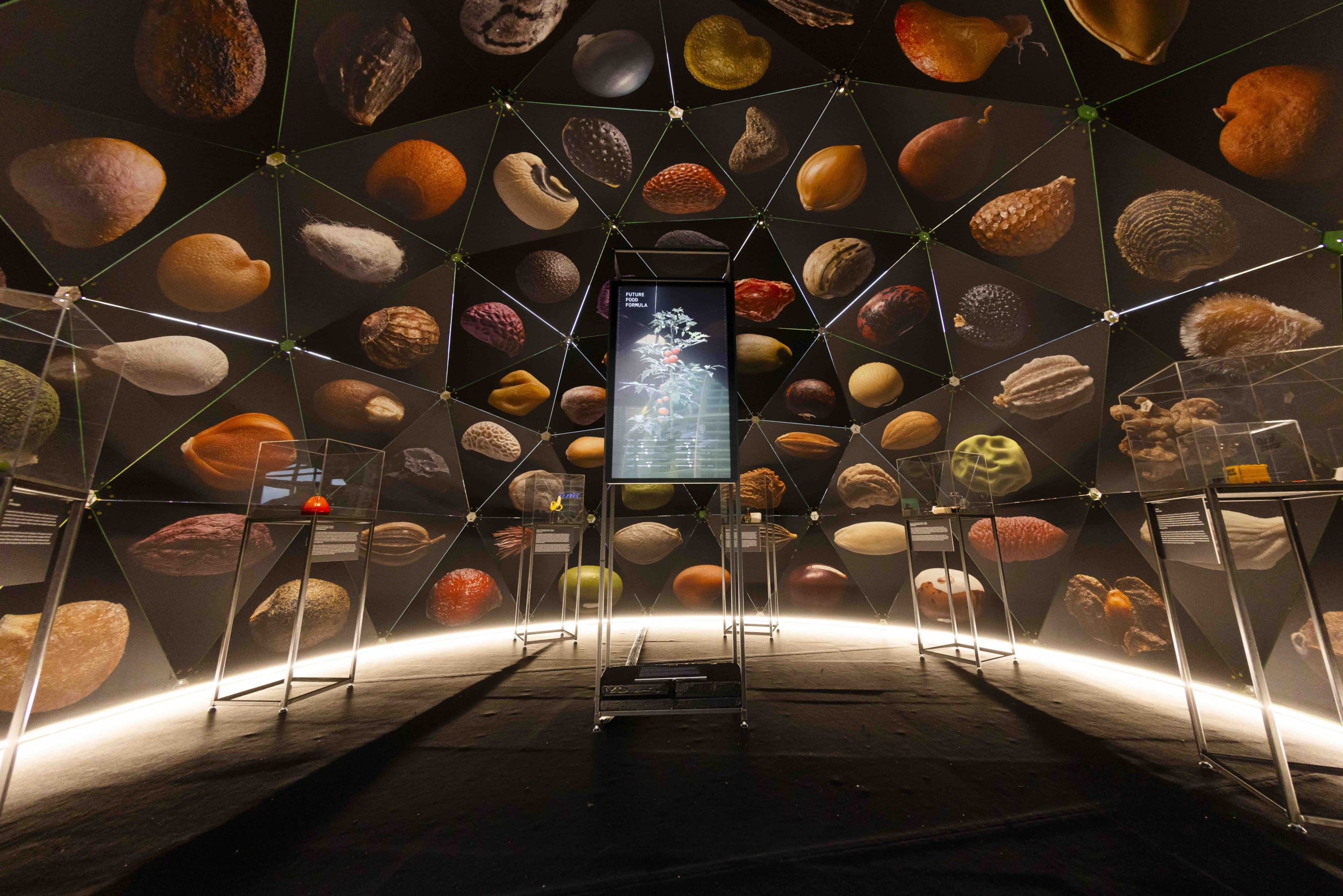
© Next Nature Museum
Everything is presented with promotional texts, that border on ballyhoo, and a slick design that wouldn’t be out of place in a commercial. The creative driving force behind this is Mieke Gerritzen, former director of MOTI, Museum of the Image and Van Mensvoort’s partner. The driving force himself is not lacking in charisma either, which he frequently displays in lectures and projects in other venues. In a publication to mark the occasion of his artist in residency at Rabobank, Van Mensvoort calls himself a tightrope walker. “I want to be in the middle. With my head in the clouds, with my feet on the ground and with my hands in the mud.”
A vision beyond the Anthropocene
But in terms of ideology, Van Mensvoort is not middle of the road at all. He is a genuine techno-optimist, with an unwavering faith in human ingenuity that allows us to innovate from the mess we have created with that same belief in progress. Whereas doomsayers regard the Anthropocene as the last stop before the Apocalypse, Van Mensvoort labels the present as the ‘starting time’. By embracing technology, we are heading for a bright future, he preaches like a high priest. It is a message that resonates so forcefully in few places as it does in the heart of high-tech Brainport Eindhoven, the ultimate temple of modernism.
Van Mensvoort labels the present as the 'starting time,' rather than the last stop before the Apocalypse
Admittedly, Next Nature is not completely blind to the potentially negative sides of technology. But ethical concerns are generally drowned out by vistas with an undeniable wow factor. In a museum landscape where gloom seems to be the keynote, that is sometimes quite refreshing. The upcoming exhibition in 2025 will be the litmus test for Van Mensvoort’s sense of balance. In Enter Spaceship Earth, Next Nature explains how we can best behave as astronauts of our planet. To maintain our current production and consumption behaviour we would still need at least three planets.

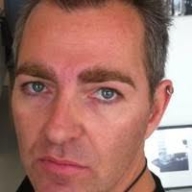
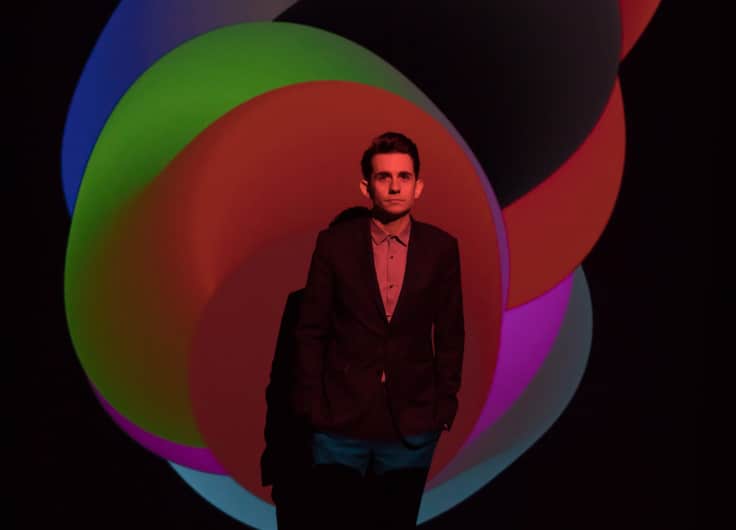

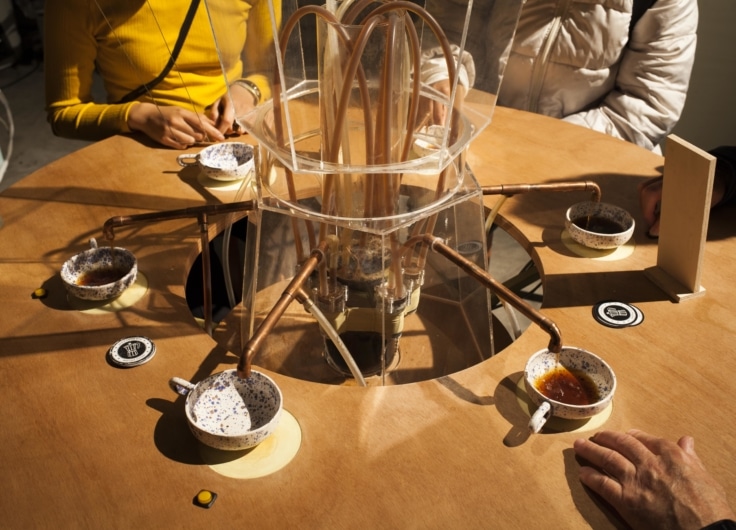




Leave a Reply
You must be logged in to post a comment.